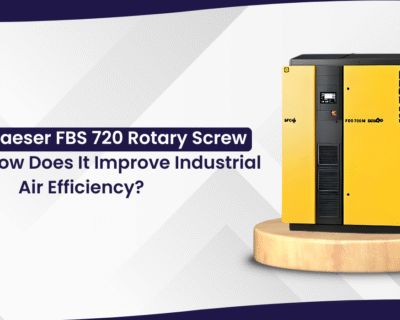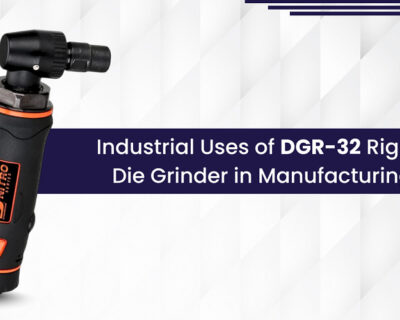Blog

Compact Thermal Mass Flow Meter: Features, Specs, and Ideal Applications
A Compact Thermal Mass Flow Meter is a practical way to measure the mass flow and consumption of compressed air and industrial gases with high repeatability and a low installation footprint. It uses a heated sensor and detects how much heat is carried away by the moving gas, turning that cooling effect into a direct mass flow reading without extra pressure or temperature compensation. This saves time during installation, simplifies reporting, and supports reliable energy and leak monitoring at the point of use.
What it is and how it works
A Compact Thermal Mass Flow Meter places a heated sensor and a reference sensor in the gas stream inside an inline body. As gas flows, it cools the heated element; the meter measures the energy needed to maintain a fixed temperature difference and converts it into mass flow. Because the principle is based on heat transfer, you get direct mass flow with excellent low-end sensitivity and a wide turndown ratio, which is ideal for compressed air and nitrogen where flow varies across shifts and machines. In day-to-day terms, it reads true gas usage for audits, cost allocation, and efficiency projects with minimal pressure loss and no moving parts.
Why choose a compact inline design
A compact inline design removes the need for long straight runs because an internal flow conditioner calms the profile, helping maintain accuracy in tight spaces. It also reduces pressure drop compared with many differential devices, which is helpful when protecting compressor efficiency. With an integrated display and modern outputs, technicians can commission quickly, see live values at the machine, and plug the signal into existing PLC or SCADA systems. For plants standardising on digital protocols, Modbus over RS‑485 helps connect multiple meters on one trunk.
Suto product overview
Suto offers a clear choice across three models so you can match budget, performance, and application:
- S415 – Economic: A compact inline model focused on cost-effective flow and consumption monitoring for compressed air and nitrogen at the point of use. It offers fast response, solid accuracy for utilities, and essential outputs, making it ideal for energy teams and maintenance-led audits.
- S418 – High End: A higher-spec platform for users who need tighter accuracy, extended diagnostics, and broader configuration options. It suits validated environments, detailed cost allocation, and advanced controls, without losing the installation simplicity of an inline body.
- S418‑V (Inline‑Sensor): An inline-sensor variant for applications that demand premium measurement stability within a compact form factor. This is well suited to lines where consistent accuracy, wider ranges, or specific protocols are critical.
Core features that matter
- Direct mass flow: No separate pressure/temperature compensation, simplifying set-up and improving traceability for reports and audits.
- Wide turndown: Captures both low leaks and peak demand, so a single meter can cover varying production loads.
- Low pressure loss: Protects compressor energy and downstream tools, important for cost and performance.
- Fast response: Tracks quick changes in consumption at machines and test benches.
- Integrated display: Clear local readout for commissioning and daily checks.
- Outputs and protocols: 4–20 mA, pulse/totaliser, and Modbus/RTU options for flexible integration into existing control systems.
- App-based configuration: Secure, quick parameter changes without opening enclosures, reducing downtime on the floor.
- Multiple sizes: Common DN options (e.g., DN8 to DN50 and beyond) to fit main headers and point-of-use drops.
Typical specifications snapshot
While exact figures vary by model and size, you can expect:
- Accuracy suitable for compressed air and nitrogen utility monitoring, with high repeatability for trending and benchmarking.
- Turndown ratios that comfortably cover leaks through peak events.
- Response times on the order of seconds for practical real-time visibility.
- Supply 15–30 VDC, with standard industrial I/O and RS‑485 networking where selected.
- Protection suitable for factory environments, with recommended air quality to keep the sensor clean for stable readings.
Ideal applications
- Compressed air consumption monitoring: Track usage at machines, lines, and zones for cost allocation and ISO 50001 energy management.
- Leak detection and verification: Use the low-end sensitivity to quantify leak rates, then verify savings after repairs.
- Compressor and dryer optimisation: Map demand, reduce unloaded running, and right-size dryers using real consumption data.
- Nitrogen distribution: Monitor N2 usage at packaging, blanketing, or lab lines to trim losses and improve supply planning.
- Utility sub‑metering: Assign costs to departments and products to drive accountability and process improvements.
- Maintenance dashboards: Feed live mass flow, total consumption, and alarms into SCADA to support proactive decisions.
How to choose the right Suto model
- Choose S415 – Economic when the priority is dependable point-of-use monitoring with a strong value-to-performance balance, especially for compressed air and nitrogen utilities.
- Choose S418 – High End if your application demands tighter accuracy, extended diagnostics, or more advanced integration across validated or tightly controlled processes.
- Choose S418‑V (Inline‑Sensor) when a compact, premium inline sensor is required for higher ranges or specific control network needs in a small footprint.
Installation and best practices
- Place meters close to the point of use to capture true consumption and machine behaviour.
- Keep air quality within recommended limits to maintain sensor stability over time.
- Use the built‑in flow conditioning to reduce straight-run constraints, but avoid placing the meter directly at a sharp elbow or valve if you can allow a short settling distance.
- Standardise reference conditions across meters (e.g., ISO 1217) so reports align from line to line.
- Use Modbus/RTU to daisy‑chain multiple meters to a single master for lower wiring cost and simpler integration.
Why buy from Sanjay Tools
As an authorised distributor for Suto, Sanjay Tools helps you select the right Compact Thermal Mass Flow Meter, size it accurately, and integrate it cleanly with your existing systems. You get model guidance (S415 vs S418 vs S418‑V), DN and range selection, wiring support, and post‑installation assistance. This ensures your project delivers fast, measurable savings in compressed air and nitrogen management without adding complexity on the shop floor.
Need help choosing a size or output? Share your line size, gas type, expected min/max flow, and preferred protocol, and a recommended Suto configuration will be provided along with pricing and lead time.





